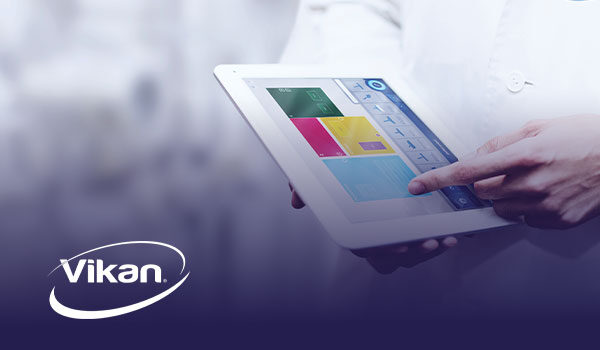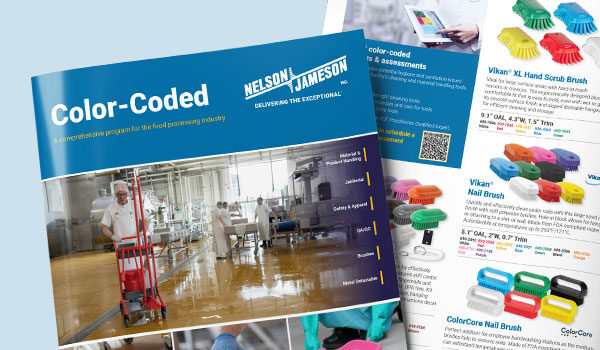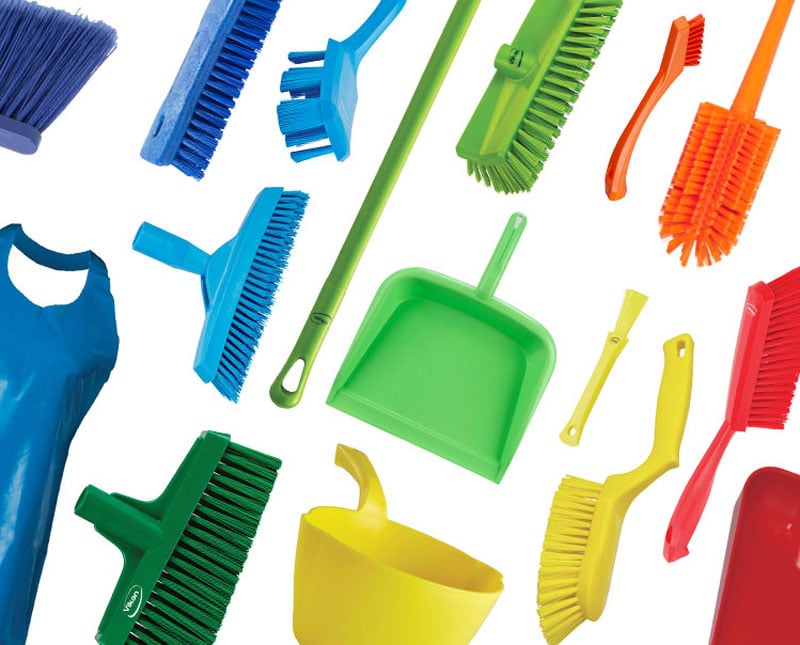
There are many ways to go about implementing a color code program. Here are a few examples of good practice examples of color coding:
Choose one color for the cleaning equipment and tools that come into contact with food, and a different color for equipment and tools that do not. Also, select one particular color for cleaning drains.
There are no set rules or regulations about which color to use where in a food facility. For increased food safety, we recommend choosing a color that contrasts clearly with the food you produce.
This is especially important in food manufacturing and processing plants where these steps need to be kept separate to prevent cross-contamination. For example, meat processing facilities and kitchens often color code to distinguish raw meat from meat that is cooked, or semi-processed or raw foods from more finished product.
Designate colors to zones to differentiate the tools and equipment that belong to each zone. This can help with many things – from the prevention of contamination to proper organization and storage of tools, which can keep employees accountable for the tools in their work zone.
Learn more about color coding with the complete guide!

Vikan is a leading supplier of hygienic cleaning tools and insight for the food & beverage industry and other hygiene-sensitive environments in North America.

November 13, 2025
In the demanding field of occupational safety, protecting workers requires more than just offering equip...

November 12, 2025
For professionals who must maintain productivity and a secure grip in frigid conditions, the MCR Safety ...
.jpg)
November 12, 2025
In demanding, hygiene-sensitive environments like food manufacturing and dairy processing, effective pro...

Recognize and address possible hygiene and sanitation challenges based on the cleaning and material handling equipment available in your facility.
Through a discovery call, virtual, or on-site assessment, Vikan SQF Practitioner certified specialists will assist in confirming that your system and cleaning tool inventory aligns with your risk management objectives while pinpointing any missing tools and enhancing maintenance and usage practices. Evaluate whether your existing tools are utilized in the most effective manner, or determine if a more suitable tool exists for the task at hand. Ensure that your tools comply with all relevant standards and regulatory requirements. Site evaluations encompass a summary survey, an overview of the location, a color-coded factory layout plan, product suggestions, a recommended order form, and a proposal for a follow-up survey.
Food Safety, Sanitation, Cleaning Tools, Color Coding

This is a comprehensive program for the food processing industry. Nelson-Jameson brings together the most extensive collection of color-coded products for material handling, product handling, janitorial, safety, apparel, QA/QC, and metal-detectable applications. With the right pieces, a color-coding system is a powerful tool in preventing cross-contamination of allergens and food-borne illnesses that can lead to sickness or expensive product recalls.

Food Safety, Sanitation, Cleaning Tools, Color Coding

With existing and emerging threats, food safety has never been more important to food manufacturers in protecting their consumers and their organization.
Color Coding

Laboratory, Color Coding, Food Safety